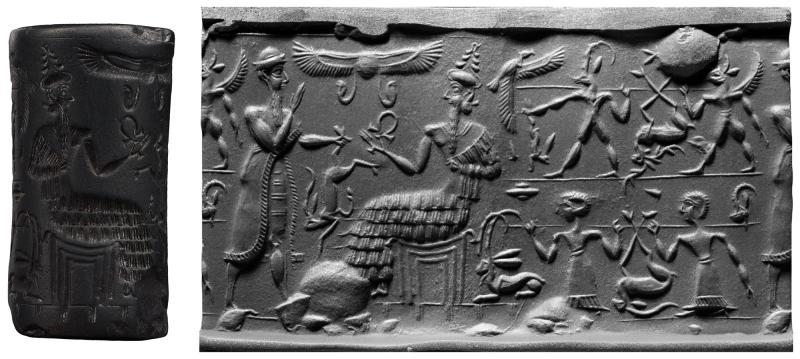
"Seals 910-913 show worshipers before a seated deity; ... The shape of the throne, which in 910-913 resembles that of a temple, is characteristic of scenes of the Third Dynasty of Ur and of early Old Babylonian designs ... Since 910 has been referred to the time of Hammurabi, 911-913, which present related subjects, may be similarly dated, though the deities are rendered not with horned miter as in 910 but with the more typically Syrian short curled hair. The worshiping scenes of 910-913 can be differentiated from their Mesopotamian parallels by the egyptianizing character of the objects held by the enthroned deities ... Of the small symbolic designs that appear in the field in Old Babylonian seals, only the ball staff and vessel recur with any frequency in these Syrian seals."--Porada, CANES, p. 118-119
Worshiper offering gazelle, held by hind leg, to god enthroned on platform and grasping Egyptian life sign -- Between figures, sun disk with pendant uraeus-like snakes -- Behind throne, recumbent ibex with triple-ringed cup above it -- Secondary motif: above, ibex-demon holding hare by hind leg and winged bull-demon, both shouldering bar from which stag is suspended, with vulture perched on front tip of bar -- Below, two attendants carrying bar from which antelope is suspended, with ibex head impaled on rear end of bar.
